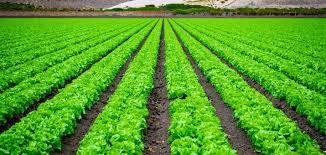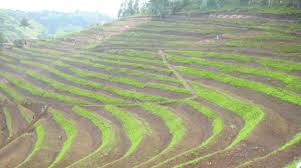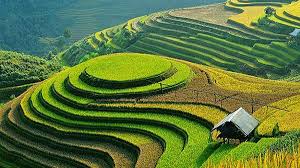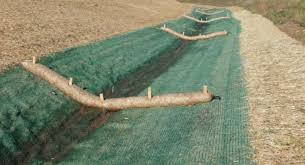Soil Conservation Practices are essential techniques used to protect and maintain the quality of soil, ensuring it remains productive and capable of supporting healthy plant growth. Soil is a fundamental resource for agriculture and ecosystems, providing essential nutrients, water, and support for plants. However, soil is vulnerable to degradation through erosion, nutrient depletion, and contamination.
Unsustainable agricultural practices, deforestation, overgrazing, and industrial activities can strip soil of its fertility, leading to reduced crop yields, increased desertification, and loss of biodiversity. Soil conservation practices aim to prevent these issues, promoting sustainable land management and protecting soil for future generations.
The importance of soil conservation cannot be overstated. With a growing global population, the demand for food, fiber, and fuel continues to increase, putting more pressure on agricultural lands. In order to meet these demands, we must preserve soil health to ensure ongoing productivity.
Healthy soil not only provides nutrients for crops but also acts as a natural water filter, supports plant and animal life, and plays a role in carbon sequestration. By practicing soil conservation, farmers, landowners, and environmentalists work to reduce erosion, maintain nutrient levels, improve soil structure, and promote biodiversity within the soil ecosystem.
Several key soil conservation practices help protect and enhance soil quality. One of the most common methods is contour farming, where crops are planted along the natural contours of the land.
This reduces runoff by slowing down the flow of water, thereby minimizing soil erosion. Terracing, another effective technique, involves constructing terraces on steep slopes to create flat areas where crops can be planted.
This helps control water flow and limits soil loss on hilly terrains. Cover cropping, where plants are grown primarily to cover the soil rather than for harvest, is another valuable practice. These crops prevent erosion, improve soil fertility, and increase organic matter content by providing a protective layer over the soil.
Crop rotation is another well-known soil conservation strategy. By alternating the types of crops grown on a specific plot of land, farmers can reduce pest buildup, improve soil nutrients, and maintain soil structure. For example, rotating legumes with other crops can add nitrogen to the soil, reducing the need for chemical fertilizers.
Similarly, agroforestry the integration of trees and shrubs with crops and livestock helps protect soil, enhances biodiversity, and provides additional resources such as firewood, fodder, and fruit. Trees reduce wind erosion, hold soil in place with their roots, and contribute to nutrient cycling in the ecosystem.
Conservation tillage is another important practice. This method involves reducing the frequency and intensity of soil disturbance, thereby maintaining the soil’s structure and organic matter.
No-till farming, a form of conservation tillage, leaves crop residues on the field, providing a protective cover that reduces erosion, improves moisture retention, and supports beneficial microorganisms in the soil.
Implementing these soil conservation practices can lead to numerous environmental and economic benefits. By reducing erosion, improving soil fertility, and promoting sustainable agriculture, soil conservation helps farmers achieve better yields while protecting valuable natural resources.
Furthermore, these practices contribute to climate resilience by enhancing the soil’s capacity to absorb water during heavy rains and retain moisture during dry periods. In summary, soil conservation practices are crucial for sustaining agricultural productivity, safeguarding environmental health, and supporting the well-being of future generations.
Overview of Cover Cropping
Cover cropping is a sustainable agricultural practice where specific crops are planted to cover the soil instead of being harvested.
These crops help protect the soil from erosion, improve its structure, and add organic matter, benefiting overall soil health. Cover crops also suppress weeds, reduce pests, and enhance biodiversity in farming systems.
Benefits of Cover Cropping for Soil Conservation

1. Erosion Control: Cover crops protect the soil from wind and water erosion by providing a protective layer that reduces soil displacement.
2. Improved Soil Structure: The roots of cover crops help improve soil structure, increasing aeration and water infiltration, which promotes healthier plant growth.
3. Nutrient Management: Some cover crops, like legumes, fix nitrogen in the soil, reducing the need for synthetic fertilizers and enhancing soil fertility.
4. Organic Matter Addition: Cover crops increase organic matter in the soil, promoting healthier microbial activity and better nutrient cycling.
5. Moisture Retention: Cover crops help retain soil moisture, reducing the need for irrigation and improving drought resilience.
Types of Cover Crops
1. Legumes: Examples include clover, alfalfa, and peas. These crops fix nitrogen in the soil, enhancing fertility while protecting the soil surface.
2. Grasses: Crops like rye, barley, and oats are excellent for erosion control due to their dense root systems that stabilize the soil.
3. Brassicas: Plants like mustard and radish help with pest control and improve soil aeration through their deep root systems.
4. Broadleaf Crops: Examples include buckwheat and sunflower, which provide rapid ground cover and attract beneficial insects, contributing to soil health and pest management.
Read Also: Worm Infestation on Ruminant Animals: Symptoms and Treatment
Benefits of Terracing for Erosion Control

1. Erosion Prevention: Terracing reduces the speed of water runoff, minimizing soil erosion and preventing the loss of topsoil.
2. Water Conservation: Terraces trap rainwater, allowing it to soak into the soil rather than running off, which improves water availability for crops.
3. Increased Land Usability: Terracing makes steep and hilly land suitable for farming, increasing the amount of arable land.
4. Improved Crop Yields: By improving water infiltration and reducing erosion, terracing helps create healthier soil, leading to better crop productivity.
Types of Terracing Techniques
1. Bench Terracing: This involves creating wide, flat steps along the contour of the land. It is ideal for areas with moderate to steep slopes.
2. Contour Terracing: In this method, terraces follow the natural contour of the land, which helps slow water runoff and reduces erosion in less steep areas.
3. Graded Terracing: Graded terraces are constructed with a slight gradient, allowing excess water to flow slowly off the land while minimizing erosion.
4. Steep Terracing: Used in extremely steep areas, this technique involves creating narrow terraces with high retaining walls to stabilize the soil and slow water runoff.
Read Also: Hookworms: Description, Damages Caused, Control and Preventive Measures
Steps for Implementing Terracing

1. Land Assessment: Assess the slope, soil type, and rainfall pattern to determine the most suitable terracing technique.
2. Design and Layout: Plan the layout of the terraces, ensuring they follow the land’s natural contours or the desired design to optimize water retention and minimize erosion.
3. Construction: Build the terraces by digging out soil and reinforcing the retaining walls with stones, vegetation, or other materials to provide stability.
4. Maintenance: Regularly inspect and maintain the terraces to ensure they are functioning effectively, checking for any signs of erosion or collapse.
Combining Cover Cropping and Terracing for Optimal Soil Health
1. Enhanced Erosion Control: Combining cover cropping with terracing significantly improves erosion control. While terraces slow water runoff, cover crops protect the soil surface from erosion.
2. Improved Water Retention: Terraces slow water runoff, and cover crops increase water absorption, leading to better moisture retention for crops.
3. Nutrient Management: Cover crops help fix nitrogen and improve soil structure, while terracing minimizes nutrient loss by preventing soil erosion.
4. Long-Term Soil Fertility: This combination helps maintain soil fertility, ensuring long-term productivity by preventing land degradation and promoting soil regeneration.
Integrating cover cropping and terracing is a powerful strategy for maintaining soil health and preventing erosion in agricultural systems.
Do you have any questions, suggestions, or contributions? If so, please feel free to use the comment box below to share your thoughts. We also encourage you to kindly share this information with others who might benefit from it. Since we can’t reach everyone at once, we truly appreciate your help in spreading the word. Thank you so much for your support and for sharing!
Read Also: How to Choose the Right Trash Service for Your Needs

